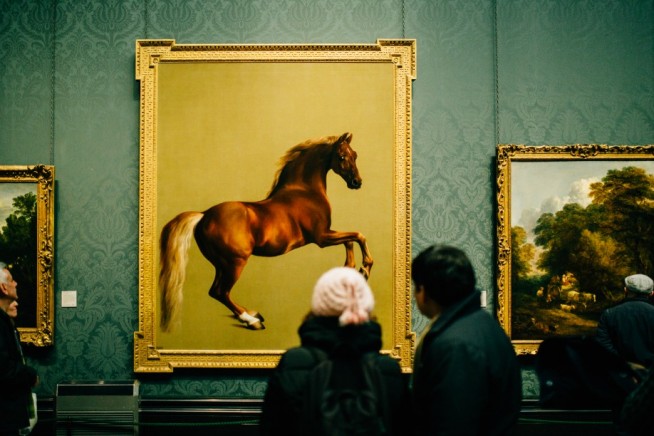I take giant amounts of notes, and I’m constantly copying passages from books that I read. It’s a lot of work, but it’s also one of my favorite things to do.
Oddly, I’ll often take notes, or copy passages, where the meaning isn’t clear to me. Sometimes it takes me years (if ever) to understand the meaning of something that I knew was significant, but didn’t know why. And then, when I grasp it — so thrilling! Nothing makes me happier.
This kind of epiphany happened to me recently, when I was in London, where I managed to visit the beautiful Wallace Collection.
Years ago, I read a fascinating book called The Conversations: Walter Murch and the Art of Editing Film, by Michael Ondaatje, and I copied down a passage from Francis Ford Coppola’s notes for the script of the movie The Conversation. Coppola wrote:
The opening might be built out of fragments of various conversations. So that when we first meet the two young people they seem like just another conversation until we see that the microphone is trained on them: they are important only because someone is listening.
Something becomes important, because someone is paying special attention.
@gretchenrubin (Click to Tweet!)
I never really quite understood why this struck a chord with me — until I saw Poussin’s painting, Dance to the Music of Time, hanging on the wall in the Wallace Collection.
Why?
This painting is used in the exceptionally gorgeous design of Anthony Powell’s novels in the four-volume A Dance to the Music of Time.
Because I know these books well, and admire these four volumes every time I spot them in the bookstore, I assumed that the painting was quite important and famous.
However, the Wallace Collection didn’t make mention (that I saw) of the fact that this painting was in their collection. And it was almost by accident that I spotted the painting, at all.
 There are so many paintings in the room.
There are so many paintings in the room.
 Can you find it? In the first picture, it’s on the far wall, the bottom painting to the left of the large painting in the middle. In the last picture here, it’s at the bottom, in the middle.
Can you find it? In the first picture, it’s on the far wall, the bottom painting to the left of the large painting in the middle. In the last picture here, it’s at the bottom, in the middle.
Because of those books, I’d found the painting beautiful and important; because someone put it in the spotlight — because I saw it over and over, and took the time to look at it closely, and to think about its meaning.
If I’d just been wandering through the rooms, glancing at the paintings, I doubt I would’ve given the painting a second thought.
But when my attention was fixed on it, I learned to appreciate it.
 I think of this, too, when I look at old class photos of my children. In a way, the children look all alike, and these photos look exactly (except for the clothes) the way my class photos look, from the same age. And yet — those are individuals! Some faces I recognize, some are precious to me. Because I know them.
I think of this, too, when I look at old class photos of my children. In a way, the children look all alike, and these photos look exactly (except for the clothes) the way my class photos look, from the same age. And yet — those are individuals! Some faces I recognize, some are precious to me. Because I know them.
I’m not explaining my epiphany very clearly.
It’s just that — it’s our listening that makes a conversation important; it’s our vision that makes a masterpiece; it’s our love that makes a face stand out from the crowd.
“They are important only because someone is listening.”
Do you know what I mean? Have you ever had an experience like this — when your attention transformed an object into something dazzling?
P.S. This got me thinking that a fun project would be to choose fifty-two pieces in the Metropolitan Museum of Art (which is near my apartment) and spend a week studying and visiting each one, to understand why it’s great. And to write a book about it, of course! I’m certain that those works would be immeasurably more beautiful to me, after I’d studied them — even for a week. Gosh, I’d love to do that. I’ve always wanted to learn and write about art…
Gretchen Rubin is the author of the #1 New York Times Bestseller The Happiness Project—an account of the year she spent test-driving the wisdom of the ages, current scientific studies, and lessons from popular culture about how to be happier—and the recently released Happier at Home and Better Than Before. On her popular blog, The Happiness Project, she reports on her daily adventures in the pursuit of happiness. For more doses of happiness and other happenings, follow Gretchen on Facebook and Twitter.
Image courtesy of negativespace.co












